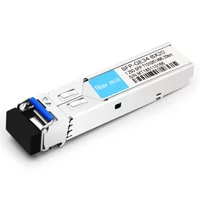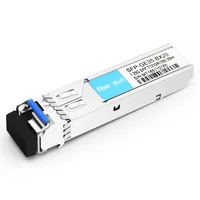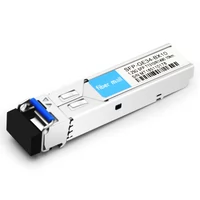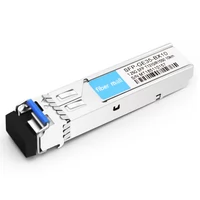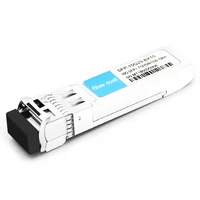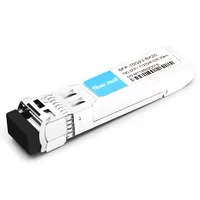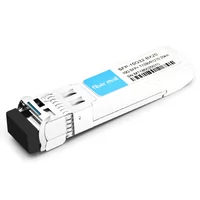The need for advanced optical communication technologies has grown as more and more people get into networking. Bidi transceivers (also known as bidirectional transceivers) help send data quickly through fiber optic networks by using one fiber to both send and receive signals. This not only saves resources but also cuts down on infrastructure costs. This article will go over what SFP Bidi modules do, how they work, where they’re used, and why you might want to use them yourself – everything you need for an educated decision about implementing this technology in your network environment. Whether it’s just another day at work or your first time ever hearing about these things, we hope our words can shed some light on the subject and make it easier to understand what is happening behind the scenes when two devices communicate over long distances via light signals passed between them!
Table of Contents
ToggleWhat is a Transceiver?
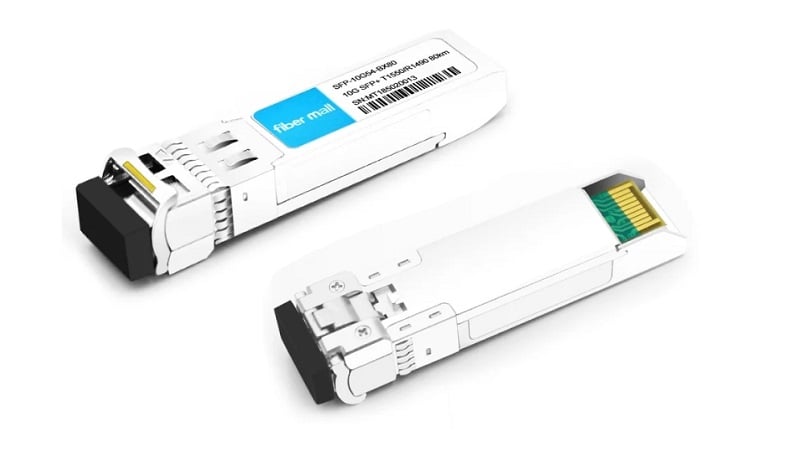
Comprehensive Overview of a Bidi Transceiver
A bidirectional transceiver (bidi transceiver) is an optical device that can send and receive data through one fiber optic cable. In other words, this means that it allows for simultaneous two-way data flow. This technology achieves such functionality by using two different wavelengths, typically via wavelength division multiplexing (WDM). Doing this not only optimizes the use of existing fiber infrastructures but also improves network efficiency while reducing the need for additional cables. These modules find application in various networking environments such as data centers and enterprise networks where cost-effectiveness and space saving are paramount. Additionally, they can easily be integrated with already established systems without causing much disruption or requiring many changes, thus making them very popular among network experts who want high-performance levels of data transfer without interfering too much with infrastructure.
How Does Bidi Transceivers Differ From Traditional Transceivers?
The main difference between BIDI transceivers and traditional transceivers lies in their ability to use one single-mode fiber optic cable for both transmitting and receiving signals rather than having separate fibers for each direction like old-fashioned ones do. The mechanism involves the simultaneous utilization of two different wavelengths made possible by Wavelength Division Multiplexing (WDM). As a result, this approach reduces unproductive cable usage within existing fibers, thereby lowering costs related to cabling as well as simplifying deployment procedures when compared to conventional designs, which work on independent transmit-and-receive channels housed within the same box or module-type devices. Moreover, the small size factor contributes to increased flexibility during the network planning phase.
Understanding How They Work
BIDI operates based on the principle called wavelength division multiplexing, which simply refers to sending information down one strand but using two different colors at once. Essentially, what happens is that there are two lasers inside – one sends out light while another collects it back again – doubling the data capacity of this fiber link. This means fewer cables need to be used, smaller spaces are occupied, and faster installations are done. However, for best performance throughout the network, it is important that wavelengths are accurately selected so as to keep them separate from each other, thus avoiding any interference that may arise when they mix together; otherwise, it would cause problems along the entire line, such as attenuation, etc.
How Does an Optical Fiber Network Module Work?
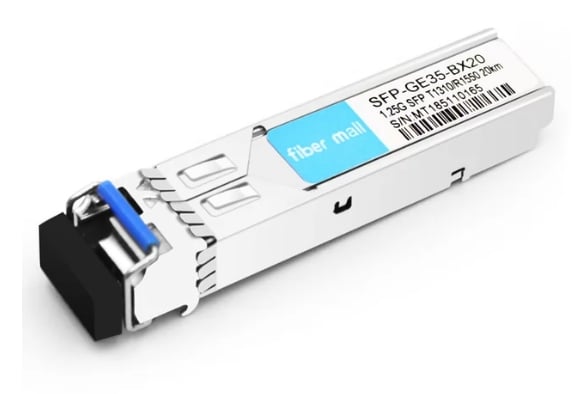
The Function of Bidi Modules in Optical Fiber Transmission Systems
In optical fiber networks, one of the most important parts is bidi modules since they allow bidirectional data transfer through a single optical fiber. They do this by means of Wavelength Division Multiplexing (WDM), which separates the transmission and reception signals into different wavelengths, thus improving overall bandwidth efficiency. Bidi modules use separate lasers for each direction thereby doubling the capacity of existing fibers without requiring additional cables. This approach not only lowers infrastructure costs but also improves network performance and deployment. The correct alignment, as well as a selection of wavelengths, plays a vital role in ensuring the least signal loss plus good quality data delivery across the network.
Bidi Fiber Module Components and Their Functions
Two lasers are used in making bidi fiber modules, i.e., one for transmitting data and another for receiving it, therefore allowing simultaneous communication over a single optical fiber line. These components have various functions, such as separating different wavelengths through optical filters so that crosstalk is minimized while converting back electrically detectable signals from light using photodetectors, among others. Moreover, these devices’ packages are designed with heat dissipation capabilities necessary for keeping them within their operational temperature ranges throughout service life durations. It is through this accurate operation of these parts that efficient wavelength picking becomes possible, leading to improved dependability on data transmission over optic fibers in general.
Why pick transceivers over the traditional ones?
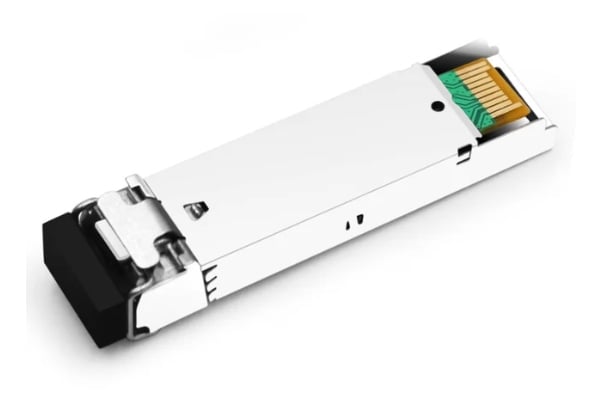
Advantages of Bidi Optical Transceivers
Bidi optical transceivers provide numerous benefits compared to conventional methods of optical transmission. To start with, they greatly enhance bandwidth capacity by enabling bidirectional data transmission on one fiber at the same time thus doubling data throughput without extra cabling. Secondly, their small size saves rack space in network equipment leading to better utilization of space. Moreover, bidi transceivers are cheap during installation and maintenance due to their easy deployment and the fact that fewer physical connections are required. Ultimately, better wave management improves general signal quality thereby lowering delays in latency and increasing reliability for data transmission.
SFP Bidi Modules: Efficiency and Cost-Savings
High-density data communication over existing infrastructure that requires minimal wiring is what makes network efficiency possible with SFP bidi modules since this eliminates the need for many cables, hence reducing cost. Besides having two channels that can work simultaneously, therefore utilizing a maximum number of fibers available reduces by half the number of physical ports needed; hence, low operations costs during installation and servicing them are incurred. Additionally, fewer devices are used, which leads to less power consumption, thus enabling operators to save money spent on energy as a whole.
Bidi Wavelength Technology: Enhanced Data Transmission
Data transfer is made better through the use of two separate wavelengths for sending and receiving channels within one optic fiber using Bidi wavelength technology as it helps to avoid congestion while maximizing throughput. This technology also allows multiple signals to be transmitted at once through fiber optics via wavelength division multiplexing (WDM), thereby creating more capacity without necessarily laying down additional fibers. Furthermore, this kind of technology supports longer distances for transmissions but still maintains high signal quality which is necessary for modern networks.
Ways of Installing and Using Transceivers
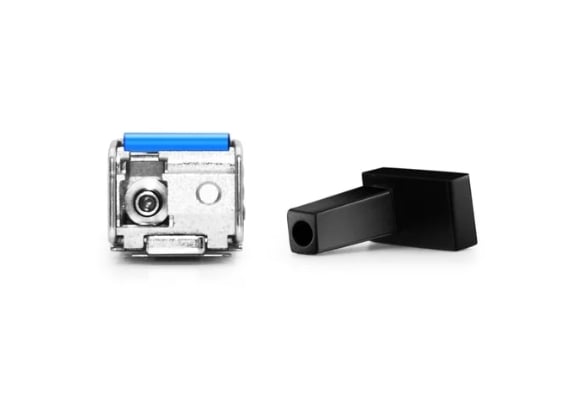
Step-by-Step Installation Guide for Bidi SFP Modules
- Power Down the Equipment: Before beginning any work make sure that none of the devices connected to your network are on. This will help prevent electrical damage while you install them.
- Prepare the Module: Take caution while handling this product not to touch its optical connectors or circuit board as they can easily be damaged if mishandled.
- Inspect the Module: Give it a thorough look over checking for any damages or visible defects.
- Locate The SFP Slot: Identify where exactly on your network device(switch, router etc.) should these modules be installed.
- Insert Module: Carefully slide the module into the slot until you hear a click sound, which indicates a successful installation. It should face the right direction as per the design of the device used with it.
- Reconnect Cabling: Connect corresponding ports on bidi SFP module using appropriate fiber optic cables ensuring they are well inserted since this is very vital in bidi networks.
- Power On The Equipment: Switch ON all networking equipment so that modules may start initializing themselves.
- Validate Installation: Use network management software or device interface to check whether the transceiver has been recognized and is working perfectly okay.
- Monitor Performance : Keep monitoring how well network performs after this set up in order for it to work at its best always.
Best Methods for Applying Bidirectional Transceivers in Data Centers
- Confirmation of Compatibility: You should always ensure that the bidi transceiver is compatible with your network equipment’s make and model to prevent any issues of connectivity.
- Adequate Ventilation: Overheating should be avoided through proper positioning of the transceivers so as not to diminish their performance or even destroy them altogether.
- Routine Servicing: You must arrange regular checks on your transceiver ports and fiber connectors which will involve cleaning them because signal loss often occurs due to dust particles and other contaminants.
- Cable Organization: There should be an organized system for managing fibers alone where they can easily be traced without having to touch any other part since this may interfere with their connection points, thus damaging both sides and reducing damages caused by pulling too hard at crowded places such as inside cable ducts or patch panels.
- Records Keeping: It is important to maintain a record system of all installed transceivers including their model numbers, configurations and also keeping track on how often each one has been serviced which can help when troubleshooting problems arises or managing them well in advance before they occur again.
- Monitoring Temperatures: Use of environmental monitors helps in ensuring that temperature and humidity levels are within acceptable limits set by manufacturers during operation thus saving the bidirectionals’ life expectancy.
What are the most common problems, and how do you troubleshoot transceivers?
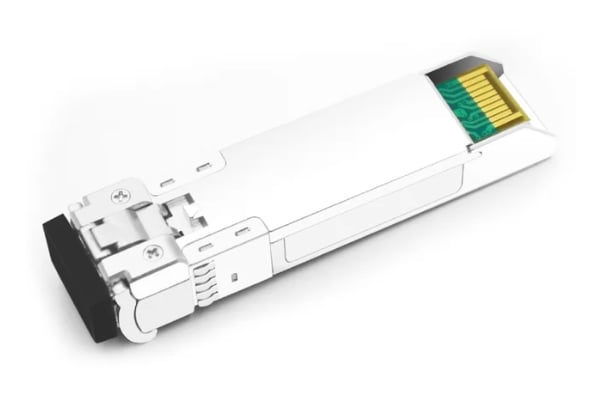
Diagnosing issues in Bidi Fiber Optic Transceiver
- No transmission of signals: Check the physical connections and see that the transceiver is correctly placed on its socket. Also check for compatibility with your equipment.
- Decreased Performance: Look at cable integrity dedicated to fiber management for bends or damages. Inspect connectors for dirtiness or contamination which may degrade signal quality.
- Connectivity that comes and goes: Take into account environmental factors such as temperature and humidity, among others, which may affect performance levels. In case it is necessary, substitute faulty cables.
- Error indicators: Use error logs from network management software to identify any reports about specific alerts related to transceivers or other problems detected during this process.
- Physical damage: Visually inspect both ports of your device together with their corresponding modules or cards for scratches, cracks and any other visible signs of wear out that might interfere with normal operation ability.
- Issues with compatibility: Ensure that both firmware versions used by different network devices plus those residing inside transceiver itself are up-to-date so as to meet communication standards required while making sure everything functions well.
Efficient Troubleshooting Techniques for Bidi Modules
- Inspect connections: Check all optical and electrical links to ensure they are properly aligned and tightened. Examine connectors for signs of wear or damage.
- Use diagnostic tools: Utilize optical power meters that measure signal strength, verifying that the power levels fall within the transceiver’s specification.
- Inspect cable conditions: Look for bends, kinks or fractures in fiber optic cables which may affect signal transmission and replace any damaged sections dedicated to fiber management.
- Update software/firmware: Regularly check for firmware updates on both the transceiver itself and any connected equipment so as to avoid compatibility issues.
- Monitor environmental variables: Employ monitoring systems that keep track of temperature and humidity levels – ensuring they stay within the specified range for all components involved.
- Log and analyze errors: Keep detailed performance metric logs along with error messages recorded; use network management tools to identify patterns and resolve recurring problems.
Maintaining Optimal Performance with Bi-Directional Optical Transceivers
To guarantee Bi-Directional (Bidi) optical transceivers work at their best, there are some practices you need to follow. First of all, clean the optical connectors regularly because dust or contaminants can cause signal degradation. Second, it is necessary to continuously monitor the optical power levels using calibrated measurement tools so that they remain within specified operating ranges. Thirdly, make sure you periodically review and adjust the alignment of your transceivers in order not to lose any signal due to misalignment frequently. Moreover, keeping an organized cabling system will not only help prevent physical damages but also make troubleshooting easier when an issue arises Finally stay updated about firmware/software releases this way you will always have a stable operational environment for your bidi optics among other types too
Reference Sources
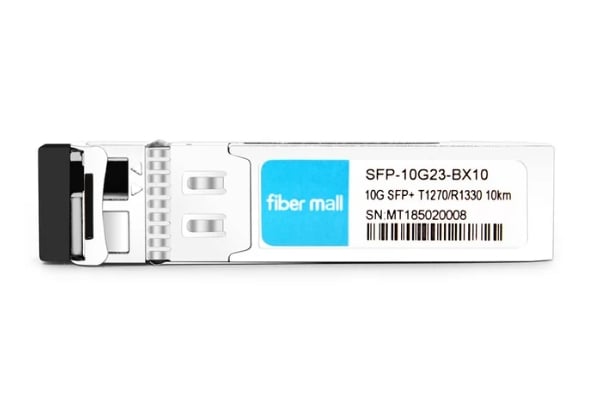
Wavelength-division multiplexing
Frequently Asked Questions (FAQs)
Q: Bidi transceivers’ introduction.
A: To begin with, an understanding of bidi-transmitters is based on the fact that these devices allow for data to be sent over a single fiber by using different wavelengths of light. This enables bidirectional communication thus reducing the amount of fiber needed significantly.
Q: How are Bidi transceivers different from traditional SFP transceiver modules?
A: Unlike traditional transceiver modules which require two fiber strands (one for each direction), Bidi transceivers use a single strand by separating data transmitted in two different wavelengths. This ensures efficient utilization of existing fiber infrastructure.
Q: What are the wavelengths of light used in Bidi transceivers?
A: Normally, bi-directional-transmitters utilize two various light wavelengths for sending and receiving information simultaneously. For instance; 1310nm/1550nm or 1270nm/1330nm are some pairs of common frequencies.
Q: One benefit of Bidi transceivers?
A: A significant advantage offered by these types of devices lies in their ability to cut down on the amount of fibers required when transmitting data. This can lead to cabling and maintenance cost savings.
Q: How do Bidi transceivers handle data transmission over a single fiber?
A: In order to send data both ways through only one cable, WDM (Wavelength Division Multiplexing) technology is utilized by bi-directional-transmitters. Optics with bidis allow separate data transmitted over a single fiber at two different wavelengths.
Q: Why must Bidi transceivers abide by the SFP Multi-Source Agreement (MSA)?
A: By conforming to this agreement it ensures that there will be compatibility as well as interoperability between various manufacturers’ tracts thus enabling seamless workability among vendor’s devices too.
Q: Applications of Bidi Transceivers in Fiber Management
A: Where there is need to utilize existing single mode fiber optic cables more efficiently, then bi-directional-transmitters come in handy. They are particularly useful when there is limited number of already laid fibers and additional ones cannot be installed. Therefore, one has no choice but to use bidi transceivers in such cases.
Q: Six-strand cable allocation for Bidi transmission?
A: When using traditional transceivers with a six-strand cable you can allocate three strands for one direction and three strands for the other. However, this requires considering bidirectional transmitters so as to make use of the fiber strands more effectively than before. But with the arrival of Bidi transceivers, you can reduce the number of fibers needed greatly.
Q: What are the key considerations when working with Bidi transceivers?
A: Some things that should not be overlooked include; ensuring pairing transmit/receive wavelengths correctly; understanding distance limitations based on wavelength/fiber type; verifying network equipment compatibility and proper set up for bidirectional communication.
Q: Can Bidi transceivers be used with both single-mode and multi-mode fibers?
A: Due to the nature of wavelengths used and distances capable of support by them, typically these types of devices are designed for deployment over single mode fiber only. However, there might be certain instances where some bi directional emitters could work on multi mode fibres too albeit being less common.
Related Products:
-
 SFP-GE34-BX20 1000Base BX BIDI SFP TX1310nm/RX1490nm 20km LC SMF DDM Transceiver Module
$6.00
SFP-GE34-BX20 1000Base BX BIDI SFP TX1310nm/RX1490nm 20km LC SMF DDM Transceiver Module
$6.00
-
 SFP-GE35-BX20 1000Base BX BIDI SFP TX1310nm/RX1550nm 20km LC SMF DDM Transceiver Module
$6.00
SFP-GE35-BX20 1000Base BX BIDI SFP TX1310nm/RX1550nm 20km LC SMF DDM Transceiver Module
$6.00
-
 SFP-GE34-BX10 Compatible 1000BASE-BX-U BIDI SFP TX1310nm/RX1490nm 10km LC SMF DDM Transceiver Module
$6.00
SFP-GE34-BX10 Compatible 1000BASE-BX-U BIDI SFP TX1310nm/RX1490nm 10km LC SMF DDM Transceiver Module
$6.00
-
 SFP-GE35-BX10 1000Base BX BIDI SFP TX1310nm/RX1550nm 10km LC SMF DDM Transceiver Module
$6.00
SFP-GE35-BX10 1000Base BX BIDI SFP TX1310nm/RX1550nm 10km LC SMF DDM Transceiver Module
$6.00
-
 Cisco SFP-10G-BX60U-I Compatible 10G BX SFP+ BIDI TX1270nm/RX1330nm 60km LC SMF DDM I-Temp Transceiver Module
$98.00
Cisco SFP-10G-BX60U-I Compatible 10G BX SFP+ BIDI TX1270nm/RX1330nm 60km LC SMF DDM I-Temp Transceiver Module
$98.00
-
 SFP-10G23-BX10 10G BX SFP+ BIDI TX1270nm/RX1330nm 10km LC SMF DDM Transceiver Module
$24.00
SFP-10G23-BX10 10G BX SFP+ BIDI TX1270nm/RX1330nm 10km LC SMF DDM Transceiver Module
$24.00
-
 SFP-10G23-BX20 10G BX SFP+ BIDI TX1270nm/RX1330nm 20km LC SMF DDM Transceiver Module
$25.00
SFP-10G23-BX20 10G BX SFP+ BIDI TX1270nm/RX1330nm 20km LC SMF DDM Transceiver Module
$25.00
-
 SFP-10G32-BX20 10G BX SFP+ BIDI TX1330nm/RX1270nm 20km LC SMF DDM Transceiver Module
$25.00
SFP-10G32-BX20 10G BX SFP+ BIDI TX1330nm/RX1270nm 20km LC SMF DDM Transceiver Module
$25.00

